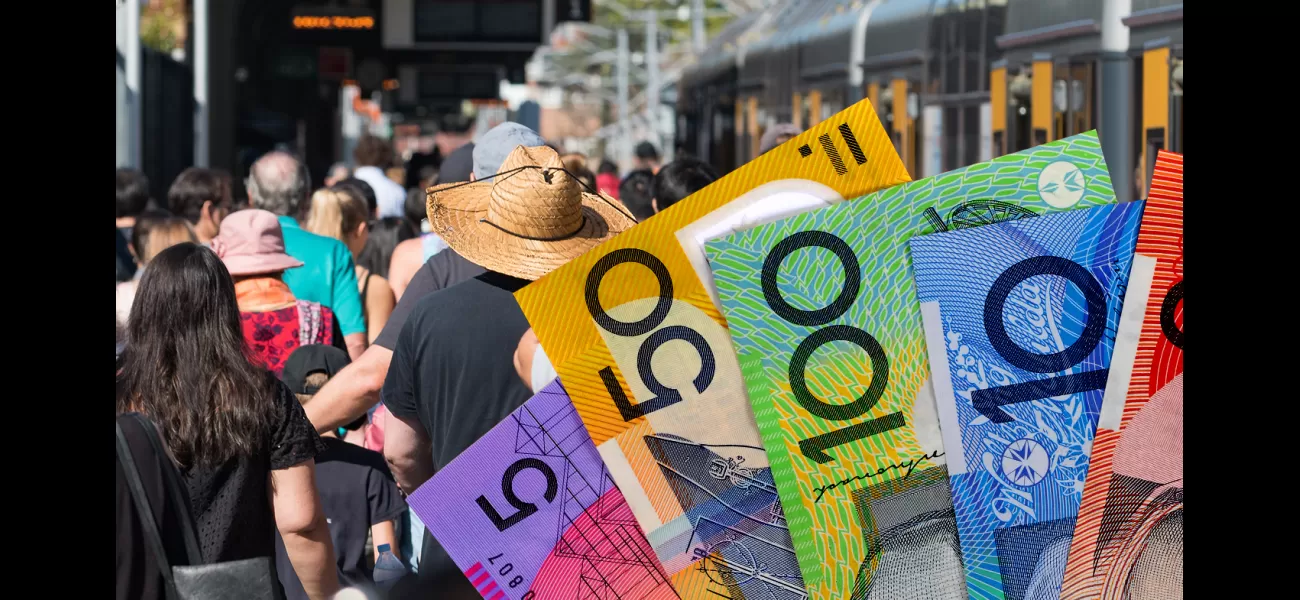Millions of Australians have less than $1000 saved.
Stubbornly high inflation and harsh interest rates are putting people's finances at risk, according to recent studies.
July 25th 2024.

New research has revealed that a staggering 3.4 million Australians are facing a financial crisis with less than $1000 in savings to fall back on in case of illness or unemployment. The InfoChoice State of Aussies' Savings survey has shed light on the harsh reality of high inflation and steep interest rates that are leaving many struggling to stay afloat.
According to the survey, a significant 16% of people have less than $1000 in savings, with almost half of them having spent a major part of their emergency fund in the past month due to the soaring prices of essential items like food, energy, and housing. The situation is particularly dire for those with a mortgage, as 10.6% of them have less than $1000 in savings and 25.5% have less than $5000. Renters have been hit even harder, with 27.4% having less than $1000 in savings and 50.2% having less than $5000.
The survey also highlighted a concerning gap between younger and older Australians when it comes to savings. A whopping 30% of respondents from Gen X (born from 1965 to 1980) have less than one month's income saved, while only 20.5% of Boomers (born from 1946 to 1964) are in the same situation. Renters are also bearing the brunt of the cost-of-living crisis, with 43.2% of them having a meagre one month's income or less in savings, compared to only 19.6% of homeowners.
Money analyst Harrison Astbury from InfoChoice emphasized that these survey results are a clear warning sign for Australians to take action. He stated, "It's evident that even one or two more interest rate hikes could push many mortgage holders over the edge, while renters are barely keeping their heads above water with no relief in sight."
The general rule of thumb for a healthy emergency fund is to have enough savings to cover three to six months of expenses. However, this seems like a distant dream for millions of Australians at the moment, and there is no indication that things will improve anytime soon. Astbury added, "Unfortunately, that level of financial security is out of reach for many right now, and there is no light at the end of the tunnel."
Aside from the dire state of savings, the survey also uncovered some interesting spending habits among different generations. Gen Z, born in the late 1990s and early 2000s, stood out for their willingness to spend on body modifications, with a significantly higher number of them reporting expenses on tattoos, lip fillers, Botox, and other cosmetic procedures compared to other generations. On the other hand, female respondents were three times more likely than men to spend on such cosmetic items, while men were more likely to spend on gambling, drugs, and adult entertainment.
In conclusion, the survey serves as a wake-up call for Australians to take a closer look at their financial situation and make necessary changes to ensure a stable future. With the cost of living crisis showing no signs of slowing down, it is more important than ever to prioritize saving and responsible spending.
According to the survey, a significant 16% of people have less than $1000 in savings, with almost half of them having spent a major part of their emergency fund in the past month due to the soaring prices of essential items like food, energy, and housing. The situation is particularly dire for those with a mortgage, as 10.6% of them have less than $1000 in savings and 25.5% have less than $5000. Renters have been hit even harder, with 27.4% having less than $1000 in savings and 50.2% having less than $5000.
The survey also highlighted a concerning gap between younger and older Australians when it comes to savings. A whopping 30% of respondents from Gen X (born from 1965 to 1980) have less than one month's income saved, while only 20.5% of Boomers (born from 1946 to 1964) are in the same situation. Renters are also bearing the brunt of the cost-of-living crisis, with 43.2% of them having a meagre one month's income or less in savings, compared to only 19.6% of homeowners.
Money analyst Harrison Astbury from InfoChoice emphasized that these survey results are a clear warning sign for Australians to take action. He stated, "It's evident that even one or two more interest rate hikes could push many mortgage holders over the edge, while renters are barely keeping their heads above water with no relief in sight."
The general rule of thumb for a healthy emergency fund is to have enough savings to cover three to six months of expenses. However, this seems like a distant dream for millions of Australians at the moment, and there is no indication that things will improve anytime soon. Astbury added, "Unfortunately, that level of financial security is out of reach for many right now, and there is no light at the end of the tunnel."
Aside from the dire state of savings, the survey also uncovered some interesting spending habits among different generations. Gen Z, born in the late 1990s and early 2000s, stood out for their willingness to spend on body modifications, with a significantly higher number of them reporting expenses on tattoos, lip fillers, Botox, and other cosmetic procedures compared to other generations. On the other hand, female respondents were three times more likely than men to spend on such cosmetic items, while men were more likely to spend on gambling, drugs, and adult entertainment.
In conclusion, the survey serves as a wake-up call for Australians to take a closer look at their financial situation and make necessary changes to ensure a stable future. With the cost of living crisis showing no signs of slowing down, it is more important than ever to prioritize saving and responsible spending.
[This article has been trending online recently and has been generated with AI. Your feed is customized.]
[Generative AI is experimental.]
0
0
Submit Comment





